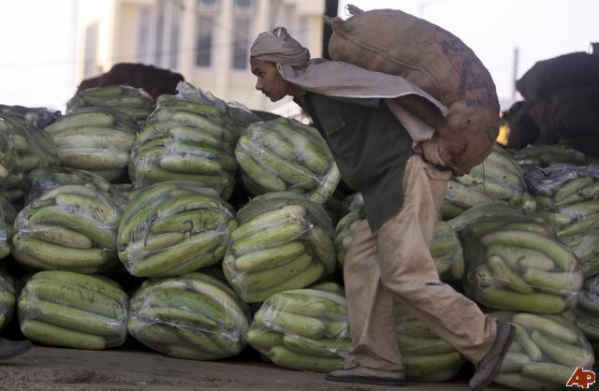Out of the many problems that are facing India, the problem of rising prices is the most intricate. Although it is affecting universally, yet it has rendered the life of the poor impossible to pull on and the number of poor in India is far greater than the rich. So it is the problem of the whole country.
Prices of all commodities are rising almost daily. For what you buy a commodity today, you cannot have it on the same price a few days after. The hardest hit on this problem is the salaried class. The businessmen and the traders meet out the problem of dearness by earning larger profits.
ADVERTISEMENTS:
The labour class too charges high wages and has a low standard of living, so they, too, anyway cope with the rising prices. But the salaries often remain fixed. The rate of increase in dearness allowance is so low that it hardly meets the rate of rising prices. The condition of the salaried class in the private sector is all the more problematic.
The Causes of the Rising Prices Are as Follows:
1. Agriculture:
We have ample progress in the field of agriculture and industry but not in proportion to the growth of population. So the supply of things wanted is less than its demand. The result is that the purchasing power of a rupee is going down. In this way, rupee is being devaluated.
2. Inflation:
The government has adopted deficit budgeting. To meet out the deficit of the budget, it takes to printing of more paper currency and having loans from abroad. Consequently there is inflation. The state governments too are in the habit of drawing overdrafts. Inflation and over drafting result in the hoarding of black money which gives rise to prices.
3. Population Growth:
The population is our country is growing rapidly. Growing population surpasses the growth of production in the fields as well as in the industries. Again the problem of demand and supply arises. Supply being less than demand, prices takes a trend of going high.
4. Corruption:
ADVERTISEMENTS:
There is corruption on all sides- government levies control and different kinds of taxes. But the corrupt officials take bribe and allow the thing to pass on the other hands favorably. Those who bribe charge the high prices for all their expenses. The stealing of taxes harms the exchequer of the government which results in all the more higher taxes and the chain goes on.
5. Artificial Shortage of Goods:
The tendency of profiteering and hoarding has also increased among the traders and the businessmen. They create an artificial want of the commodities by hoarding and raise the prices. Thus, they earn high profits. This also gives rise to black money. Such black marketers pay high prices of the commodities they need.
6. Bad Distribution Channel:
The arrangement and distribution of the commodities is also not proper in our country. Many things are decayed on the way or in the godowns. This brings scarcity of the commodities and the price rise.

Image Source:
nimg.sulekha.com/others/original700/india-price-rise-2009-11-11-7-10-9.jpg
ADVERTISEMENTS:
A number of reports have suggested that there are trillions of crores of black money in and outside the country that belongs to the Indians. By this improper hoarding, theft of taxes, and a business of smuggling from foreign lands are carried on, resulting in price rising. It has been estimated that if all the black money stored in the Swiss Bank of Switzerland comes back to our country not only will the prices be slashed down but the Indian government will also get rid of all the loans that it has taken from the developed countries.
In spite of many efforts of the government to develop the sources of energy in the country, they have not yet grown in proportion to the demands in the developing mills and factories. The production of electricity power is far less than its demand. Off and on the droughts visit the country. This causes the lesser production of hydro-electric power. So the cut of power is observed by the factories. Sometimes it goes up to three days a week. This tells upon the production of things. The supply of things goes low and the prices go high.
The laborers strike demanding high wages and the owners of the factories lock them up. This also brings down the production of the things, which again gives rise to the prices. Government employees too, demand higher salaries to cope with the dearness in the market. Lately they have entered into an agreement that with the rise of every three points in the market price index, the government will increase two or three percent dearness allowance of their salaries.
Thus, with every rise in price index, the government has to raise dearness allowance which costs them two or three hundred crores of rupees. The paper currency floats and gives rise to prices. Thus it has become an unending chain.
The problem is very intricate and horrible. Drastic efforts shall have to be made by all concerned. Unless political parties, government, farmers, laborers, government employees, traders and the businessmen and the consumers all give up their narrow selfish ends, the problem cannot be solved.
Increasing of agricultural and industrial production, proper distribution of the commodities, safeguarding them in the stories, paying taxes to the government without any evasion some of the measures which if applied honestly will not only check the trend of rising prices but also bring them down.
Let the government take initiative to bring down the prices. Deficit budgeting and floating of paper currency should be stopped and such arrangements should be made which would ensure the proper supply of things so that tendencies of hoarding and profiteering may be eradicated. The price ricing then shall stop.

